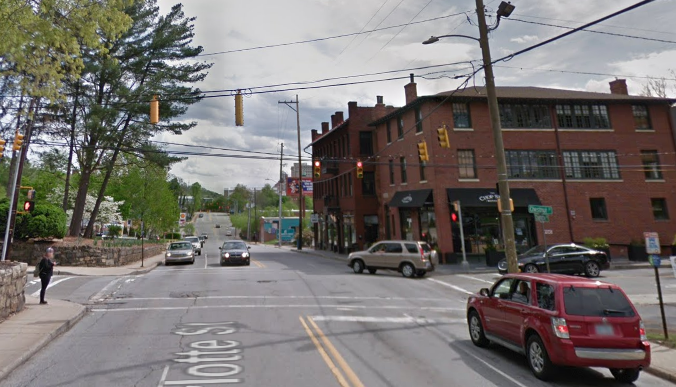Summary
The Charlotte Street Road Diet continues to show signs of success since its implementation in 2019. The second year of “Post-Implementation” analysis reveals that the project has reduced traffic speeds, increased bike use, and reduced the number of automobile collisions on Charlotte Street with no indication of increased cut-through traffic on the side streets.
Background
In 2019, the City of Asheville worked with local traffic engineering firm, Traffic Planning and Design, to design and install a “Road Diet” on Charlotte Street from Edwin Place to Clayton Street. A “Road Diet” converts a 4-lane street to a 3-lane street by removing two travel lanes and adding a center turn lane and bike lanes.
The purpose of the project was to enhance the safety of the street for all users and to improve mobility by adding bicycle facilities and buffering sidewalk users from vehicles.
Click here to view the presentation of results
Review of Results
To evaluate the impacts of the “Road Diet,” before and after data were collected to measure changes in vehicle speeds, volumes, and travel time, pedestrian and bicycle volumes, and crashes. Additionally, the project team collected data on side-streets to see if cut-through traffic increased after the project was implemented.
Data collected both 1 year and 2 years after the project was in place show decreases in overall traffic volumes, however travel times for vehicle users did increase (particularly closer to I-240). Vehicle speeds decreased slightly south of Edwin Place, and there were significant increases in bicycle volumes, and modest increases in pedestrian volumes.
Most importantly, before and after data shows that the “Road Diet” has significantly reduced crashes. In particular, crashes that are typically more severe, such as left-turn crashes and sideswipes, were significantly reduced (93% and 50% respectively). Rear-end and right-turn collisions did increase slightly (up by 5 crashes from 2019), however these types of crashes are typically much less severe.
Prior to project implementation, nearby residents expressed concern that the project may increase “cut-through” traffic on side streets connecting to Charlotte Street. Before and after data collected on Madison Avenue and Washington Street shows a decrease in traffic volumes and vehicle speed, indicating that the project did not result in additional “cut-through” traffic in adjacent neighborhoods.
Jessica Morriss, the City’s Assistant Director of the Transportation Department, said “Improving transportation safety for all users is a top priority for the City and the Charlotte Street Road Diet has successfully achieved this by reducing speeds and crashes.”
For more information, please visit the project webpage.
